Occasion: two trips to the Périgord. We were there in the summer, our friends now, and they have just returned. We were all drawn to Bruno, Chef de Police, the character in the novel by the Scottish writer Martin Walker, who has lived in the Vézère valley for years. His four crime novels - published by Diogenes - revolve around the pleasures of food and drink: truffles, foie gras, Monbazillac, Pécharmant ... Delicacies. If Bruno Courrèges - or Martin Walker - has already seduced us to seek out his world of novels, then what we have found must be spread out at home. It is not only memories, impressions, experiences - it is also delicacies. So an evening evolves from animated conversation to food to wine, from Saint-Denis (the author's fantasy place) to Saint-Émilion. Everything was there that characterizes Bruno and gave Walker's books their titles: "Grand Cru", "Black Diamonds", "Delicacies", yes, even "Bruno, Chef de Police" was there - at least the traces found.
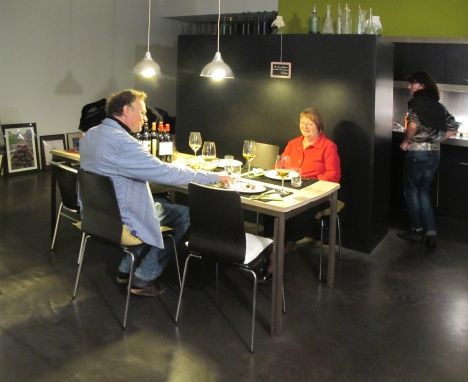
|
| Périgord evening at home - accompanied by Brunos delicacies (Photo: P. Züllig) |
Barbara prepared everything - just as Bruno had intended. Foie gras - with fresh figs, of course, accompanied by "Ainsi-soit-il", a sweet wine from Château Montdoyen in Monbazillac. It doesn't always have to be Sauternes, certainly not in the Bergerac region. The sweet Monbazillac - so my impression - has more finesse and freshness than many a "thick" Sauternes. Orange blossoms, citrus fruits, apricots, lychee - aromas that unfold in the wine, playfully pass through the palate and are not smothered in sweetness. What I rarely find in sweet wines, here it presents itself in an impressive way: the landscape, the terroir, the vastness, echoes of "l'art de vivre", a lifestyle that is also reflected in the wine and the food. Perhaps one should not only explore a wine region more often, but bring it home as a dining pleasure.
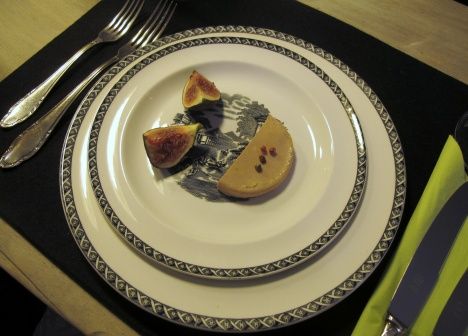
|
| Foie gras - accompanied by Monbazillac (Photo: P. Züllig) |
Then the second course: pasta with truffles, with very little cream and a little pepper. Divine! In terms of wine, we went out of our way: over to the Bordelais. It's not that far away. A young wine, the third vintage of the Aurage winery of Caroline and Louis Mitjavile
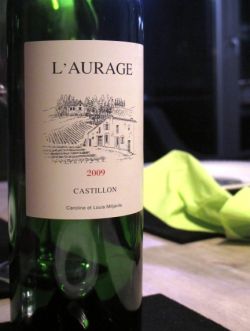
|
| Aurage from Caroline and Louis Mitjavile (Photo: P. Züllig) |
Well - the Mitjavile round is open, the connection from Périgord to nearby Bordeaux established. With the game - it was venison and not wild boar (hardly available in Switzerland!) - no less delicately prepared, Périgord-style - the second Mitjavile came to the table: Roc de Cambes, 1999, Côtes de Bourg, the eternal "insider tip". A similar personality, a little riper, Barbara thought, a slightly bitter finish. We let that opinion stand, she cooked so wonderfully after all. A sauce of which she can be justly proud. Not overbearing, simply fine, like the famous sauce of Bruno, the Chef de Police. You should read books more often, not cookery books, books that describe people who can also enjoy themselves.
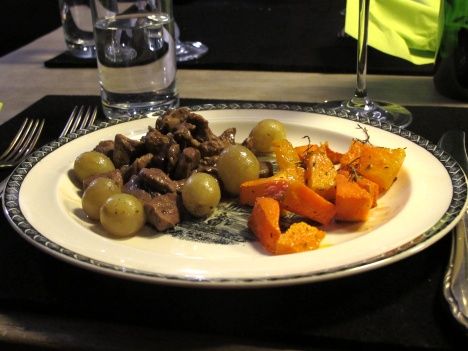
|
| Main course venison% almost like wild boar (Photo: P. Züllig) |
Of course - now it's time for the cheese. And the wine to go with it? Go back to Monbazillac again or continue to Saint-Émilion? We'd rather take a break from eating and enjoy the original, the Tertre-Rôtebœuf, 1996. A similar taste picture, only a bit deeper, riper, more playful, much longer in the finish. I know, Tertre-Rôtebœuf is controversial, mainly because it does not go in the direction of highly developed, almost standardized pleasure quality, but goes its own way and allows itself to be expensive. A different kind of quality: an expansive bouquet of different aromas like cherry, mint, red meat, cassis, plum.... One can debate about it, does it have too much, too little extract and pressure on the palate; does it have too much idiosyncrasy and independence; does it dominate too much Merlot (usually around 80 percent) and lack the classic cassis notes; is it the velvety tannins or the depth of fruit that make the wine distinctive? Certainly, opinions are divided on this. When it comes to wine, we have left the Périgord there, which cannot compete even with its best red wines, the Pécharmants. Actually, only Bordeaux is a match for the superior eating pleasures from Bruno's country, even if the Chef de Police would never admit it.
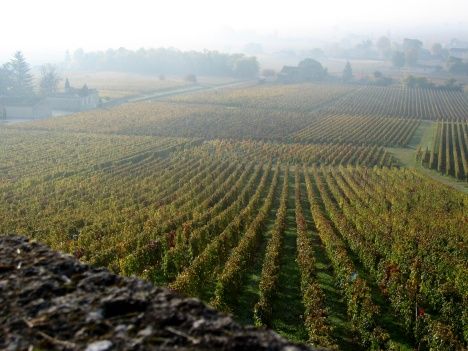
|
| The vines of Tertre-Rotebœuf% Saint-Émilion (Photo: P. Züllig) |
After the cheese - blue cheese, of course - we still want to explore it in detail, this otherness of Mitjavile wines. We open Le Bon Pasteur, 2005, from the family estate of Michel Rolland. A Rolland wine par excellence. Now, if you think we have now ranted and raved, wrinkled our noses in disappointment and resorted to scorn, I must disappoint you. The wine is elegant - has nothing or little of the Űberextrakt that is always blamed on it, nothing of the vanilla imprint by too much wood that can be found in many Rolland wines. No - the "Good Shepherd" can hold its own as a wine - even alongside Tertre-Rôtebœuf, but it is different. More mainstream, one could say, more pleasing, more familiar, maybe even rounder, just another - a Rolland wine.
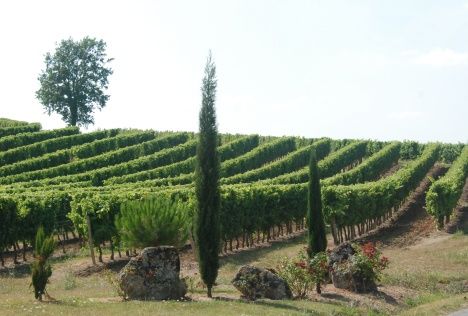
|
| Vines in Monbazillac, Périgord (photo: P. Züllig) |
This realization brings us back to the Périgord, where food was at home that evening. The realization: there are no norms when it comes to pleasure. There are not even norms for a particular region, neither for wine, nor for food. Of course, local culture shapes food and drink. Food and drink culture is transferable, almost anywhere, including home. So you can capture more Périgord and more Bordeaux in a single evening than is possible with however long wine descriptions and recipes. A few truffle crumbs, two or three small slices of foie gras, three or four selected wines bring other worlds, other cultures into the home. You just have to dedicate yourself to them, you just have to adapt them to your own desires and needs. This is how a truffle found its way to Switzerland via Bordeaux. Now it is - in memory - also at home here.
Sincerely yours